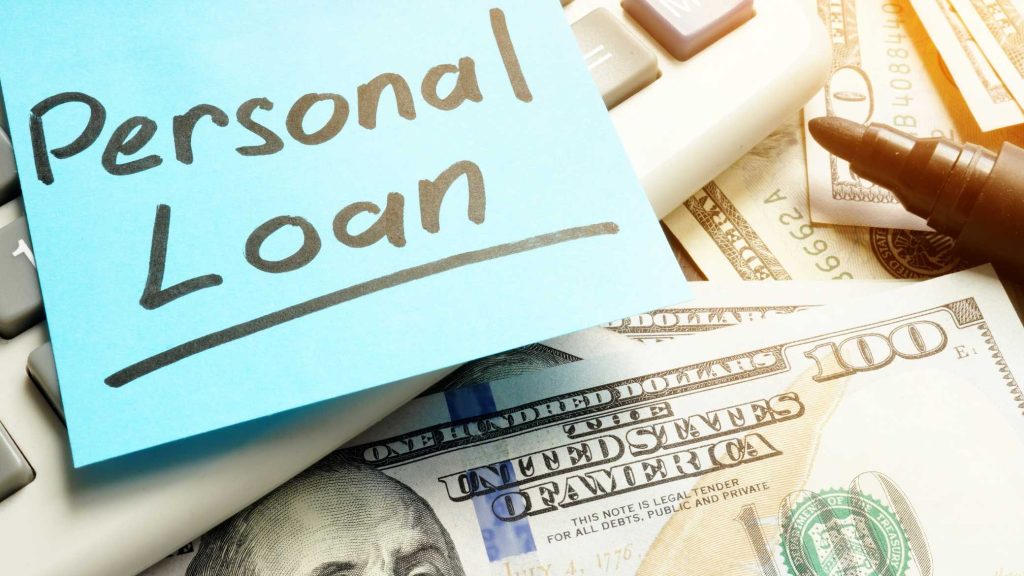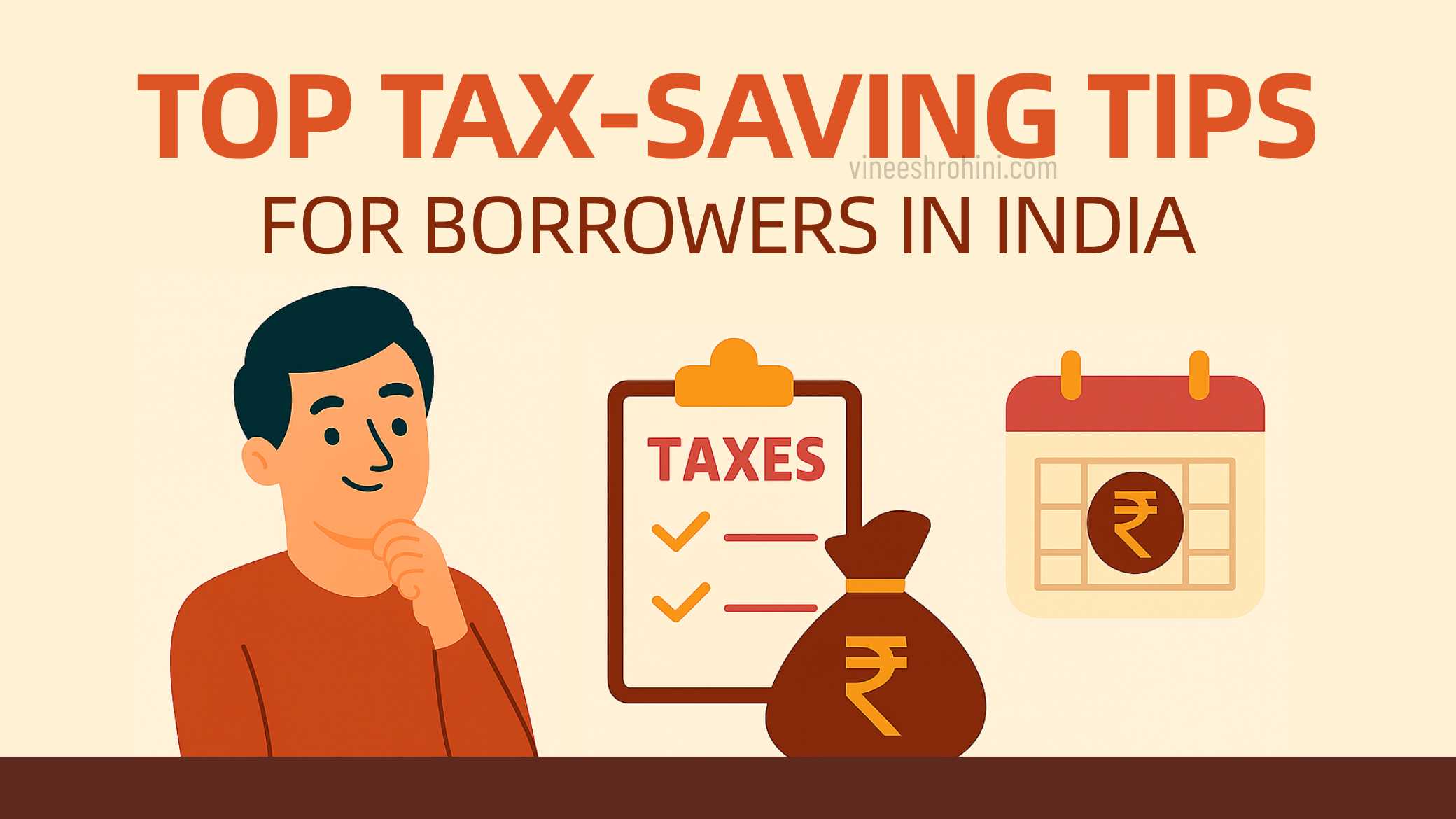Things to Consider Before Taking a Personal Loan in 2025 : A Comprehensive Guide
Personal Loan: In today’s dynamic financial landscape, personal loans continue to be a popular option for individuals looking to consolidate debt, cover emergency expenses, or finance large purchases. As we navigate through 2025, it is essential to understand the evolving trends, regulatory changes, and economic factors that impact personal loans. This comprehensive guide will provide you with an in-depth analysis of everything you need to consider before taking a personal loan. We will discuss interest rates, credit scores, lender reputation, fees and penalties, and the broader economic conditions that influence borrowing costs. This Blogs designed to help you make well-informed decisions and avoid common pitfalls associated with personal loans.
Table of Contents
Understanding the Personal Loan Landscape in 2025

The Evolution of Personal Loans
Over the past decade, personal loans have become an increasingly popular financial instrument, providing individuals with the flexibility to manage expenses without resorting to high-interest credit cards. In 2025, the personal loan market is more competitive than ever, with an abundance of options available from traditional banks, non-bank financial institutions, and innovative fintech companies. This evolution is driven by advancements in technology, regulatory changes, and shifts in consumer behavior.
Digital platforms have streamlined the loan application process, making it easier for borrowers to obtain quick quotes, compare rates, and secure funds. Additionally, data analytics and artificial intelligence are revolutionizing underwriting processes, enabling lenders to evaluate creditworthiness more accurately and offer personalized loan products.
Economic Conditions and Personal Loans
In 2025, global economic conditions continue to influence the personal loan market. Factors such as inflation, employment rates, and monetary policy have a direct impact on borrowing costs. With central banks around the world adjusting interest rates to manage economic growth and inflation, potential borrowers must be aware of how these changes affect personal loan rates.
Also Read: Secured vs Unsecured Personal Loans – What’s Right for You in 2025? : Comprehensive Guide
Understanding the economic backdrop is crucial for borrowers who want to secure a loan at the best possible terms. By keeping an eye on market trends and economic indicators, you can choose the optimal time to take out a loan and negotiate better rates.
Technological Disruption in Lending
The rise of fintech has led to a surge in alternative lending platforms that use digital technologies to assess risk, reduce processing times, and offer competitive interest rates. Mobile apps, online marketplaces, and peer-to-peer lending platforms are examples of how technological advancements are reshaping the personal loan sector. These innovations have made it easier for borrowers with different credit profiles to access funds, albeit sometimes at higher rates if deemed riskier.
Lenders now utilize machine learning algorithms to analyze alternative data points—such as mobile phone usage, social media activity, and online transaction history—in addition to traditional credit information. This broader approach to credit scoring can open doors for individuals who may have struggled to secure loans in the past.
Key Considerations When Evaluating a Personal Loan

Before you finalize any personal loan, it is imperative to evaluate several key factors. This section outlines the primary aspects that you should consider to avoid future financial strain.
Interest Rates and Loan Terms
Interest rates remain one of the most critical components of a personal loan. The annual percentage rate (APR) reflects not only the interest charged but also any additional fees bundled into the loan. Here’s what to consider:
- Fixed vs. Variable Rates: Fixed interest rates ensure that your rate remains the same throughout the repayment period, offering predictability in your monthly payments. Variable rates, on the other hand, may change based on market conditions. While variable rates can sometimes be lower initially, they carry the risk of rising in the future.
- Loan Tenure: The length of the repayment period will affect your monthly payments and the total cost of the loan. Shorter tenures usually result in higher monthly payments but lower overall interest costs, whereas longer terms reduce immediate financial pressure but increase the total interest paid.
- Prepayment Options: Some lenders allow you to prepay your loan without penalty, which can be beneficial if you plan to pay off your debt early. Always review the prepayment terms to avoid unexpected charges.
- APR Comparison: Use the annual percentage rate (APR) to compare different loan offers. A lower APR typically indicates a more affordable loan, but be sure to consider other fees and charges that might not be reflected in the APR.
Credit Score and Creditworthiness
Your credit score is a primary determinant of the interest rate and terms that lenders offer. Here are some aspects to consider:
- Credit History: Lenders will evaluate your credit history to determine your reliability in repaying loans. A robust credit history with timely payments on past loans and credit cards is likely to result in better loan terms.
- Debt-to-Income Ratio (DTI): This ratio measures your monthly debt payments relative to your gross monthly income. A lower DTI indicates better financial stability and may result in more favorable loan offers.
- Recent Credit Activity: Frequent applications for credit can negatively impact your score. Before applying for a personal loan, ensure that your credit profile is not cluttered with recent inquiries.
- Improve Your Score: If your credit score is less than ideal, consider taking steps to improve it before applying. Paying down outstanding debts, correcting errors on your credit report, and avoiding new credit applications can help boost your score.
Also Read: Personal Loan Balance Transfer: How It Works : Comprehensive Guide 2025
Fees, Penalties, and Hidden Costs
Apart from the interest rate, personal loans often come with various fees that could add to the overall cost. It is vital to identify and understand these charges:
- Processing Fees: Many lenders charge a processing fee for reviewing your application. This fee might be a flat amount or a percentage of the loan amount.
- Late Payment Penalties: Delayed payments can result in additional charges that increase the total cost of your loan. Understand the schedule for repayment and ensure you can meet the deadlines.
- Prepayment Fees: As mentioned earlier, some loans include fees for early repayment. These fees are designed to compensate the lender for the interest they lose if you pay off your loan ahead of schedule.
- Service Charges: Additional service charges, such as administrative fees or documentation charges, can sometimes be included in the loan agreement. Always scrutinize the fine print to avoid unforeseen expenses.
Loan Amounts and Repayment Periods
Determining the right loan amount and repayment period is crucial for managing your finances effectively:
- Assessing Your Needs: Borrow only the amount you need. Over-borrowing increases your monthly payment burden and extends your repayment period unnecessarily.
- Feasible Repayment Terms: Calculate your monthly budget to determine a repayment period that is comfortable for you. Use online loan calculators to simulate various repayment scenarios and understand the implications of different terms.
- Flexibility: Some lenders offer the flexibility to adjust your repayment schedule or take a break during financial hardship. Look for such features if they align with your financial situation.
- Consolidation Options: If you are considering a personal loan for debt consolidation, ensure that the loan amount covers all your debts and that the repayment terms are structured in a way to reduce overall interest costs and simplify your finances.
Choosing the Right Lender

Selecting the right lender can make a significant difference in how manageable your personal loan is. Here are several factors to consider while choosing a lender:
Banks vs. Non-Bank Financial Institutions
The financial institution you choose can influence the interest rate, terms, and overall experience:
- Traditional Banks: Banks generally offer competitive interest rates, especially to borrowers with strong credit histories. They have established reputations and regulatory oversight, which can provide an extra layer of security. However, they may also have longer processing times and stricter approval criteria.
- Non-Bank Lenders: Non-bank lenders, including credit unions and private finance companies, can sometimes offer faster turnaround times and more flexible terms. However, their interest rates might be higher for borrowers with lower credit scores.
- Fintech Companies: Fintech lenders have revolutionized the lending landscape with fully digital application processes. They often provide quick approvals and personalized terms using advanced algorithms. Research these companies carefully, as they may have varying levels of customer service and regulatory oversight.
Buy Now : Options Trading Master Class
Online Lenders and Fintech Innovations
The growth of online lending platforms has made it easier for borrowers to compare offers and find the best deals:
- Transparency: Online lenders typically provide clear, upfront information about interest rates, fees, and repayment schedules. This transparency can help you quickly gauge the total cost of the loan.
- Speed: The digital nature of online lending means that applications, approvals, and funding can be completed in record time. This is especially beneficial if you need quick access to cash.
- User Experience: Look for platforms with intuitive interfaces and robust customer support. High customer ratings and positive reviews are indicators of reliability.
- Security: Verify that the online lender uses secure data encryption and has a privacy policy in place to protect your personal information.
Reputation, Reviews, and Customer Support
Before finalizing a loan, it is wise to research the lender’s reputation:
- Customer Feedback: Look up reviews on independent websites and forums to gauge other borrowers’ experiences. Pay attention to common complaints regarding hidden fees, poor customer service, or technical issues.
- Regulatory Record: Check if the lender is compliant with national regulatory bodies. Lenders with a clean regulatory record are generally safer choices.
- Support Services: Effective customer support is critical, especially when facing issues with repayment or if any disputes arise. Test the lender’s customer service channels—such as live chat, email, or phone support—before applying for a loan.
Economic and Regulatory Factors Impacting Personal Loans in 2025
Inflation and Monetary Policy
In 2025, inflation and central bank policies play vital roles in shaping the cost of borrowing:
- Rising Inflation: When inflation rates are high, central banks may increase interest rates to slow down the economy. This often results in higher borrowing costs for personal loans.
- Monetary Policy: Keep an eye on policy decisions made by central banks, as these can forecast upward or downward adjustments in loan interest rates. Borrowers who anticipate rate hikes may benefit from locking in a fixed-rate loan.
- Economic Projections: Stay updated with economic forecasts from reputable institutions, as these projections can guide your decision on when to take out a loan. Timing your loan application during periods of low interest rates can result in significant savings over the life of the loan.
Regulatory Changes and Consumer Protection
Regulatory developments are continuously shaping the landscape of personal lending:
- Interest Rate Caps: Some regulatory bodies may impose caps on interest rates, protecting borrowers from predatory lending practices. Familiarize yourself with the legal limits in your country.
- Transparency Requirements: Increasingly, regulators demand full disclosure of all fees and charges. This helps borrowers compare offers on a level playing field.
- Data Protection Laws: With digital lending on the rise, data protection regulations ensure that your personal and financial information is handled securely. Ensure that your lender complies with such regulations.
- Dispute Resolution: Know your rights in case of disputes with your lender. Many jurisdictions have established consumer protection bodies to resolve conflicts involving financial products.
Market Trends and Future Projections
Understanding market trends can prepare you for future shifts in the personal loan market:
- Emerging Technologies: Innovations such as blockchain-based lending platforms could provide more secure and transparent borrowing options in the coming years.
- Shifts in Consumer Behavior: As more consumers turn to digital channels for financial services, lenders are adapting with more personalized loan products. Embrace platforms that offer innovative features such as instant approvals or flexible repayment plans.
- Integration of Artificial Intelligence: AI-driven credit assessments are likely to become standard practice. Borrowers who understand how alternative data is used in credit scoring may have an advantage in securing favorable loan terms.
- Economic Resilience: The ability of the financial sector to withstand economic shocks remains critical. Monitor how global economic events—such as supply chain disruptions or geopolitical tensions—might impact lending conditions.
Personal Loan Use Cases and Strategies

Identifying the right use case for a personal loan is essential to maximize its benefits and minimize potential risks. Here are some common strategies and applications:
Debt Consolidation and Financial Planning
Many borrowers opt for personal loans to consolidate multiple high-interest debts into a single, lower-interest payment plan:
- Lower Monthly Payments: Consolidating your debt may reduce your monthly obligations and provide you with a simplified repayment schedule.
- Improved Credit Score: Paying off multiple debts on time using a consolidation loan can improve your credit profile over the long term.
- Refinancing Options: Some lenders offer refinancing options, allowing you to negotiate better interest rates once your credit score improves. Ensure that you understand the terms and fees associated with consolidation loans before proceeding.
Emergency Expenses and Short-term Financial Gaps
Unexpected expenses, such as medical emergencies or urgent home repairs, may necessitate quick access to funds:
- Immediate Access to Capital: Personal loans often provide faster disbursements compared to other financing methods, making them suitable for emergencies.
- Avoiding High-Interest Alternatives: By choosing a personal loan over payday loans or other high-interest credit options, you can manage your finances more effectively.
- Budgeting for Emergencies: Before taking out a loan for an emergency, carefully evaluate your budget to ensure that you can meet the repayment obligations without compromising your essential expenses.
Home Renovation, Education, and Other Uses
Beyond debt consolidation and emergencies, personal loans can be an effective tool for financing investments in your future:
- Home Improvements: Renovating your home can increase its market value. A personal loan might offer a flexible solution if you prefer not to tap into your home equity.
- Education and Skill Development: Whether you’re considering further studies or professional certifications, a personal loan can help fund your educational endeavors without incurring prohibitive interest rates.
- Starting a Small Business: For aspiring entrepreneurs, a personal loan may provide the necessary capital to kickstart a business venture. Ensure that you have a solid business plan and risk management strategy in place before committing.
Buy Now : Options Trading Master Class
Risk Management and Borrower Best Practices
Borrowing responsibly is key to leveraging personal loans to improve your financial situation. Here are some best practices:
Budgeting and Financial Planning
- Create a Realistic Budget: Before taking a personal loan, outline your monthly income and expenses to understand how the loan repayments will fit into your budget. Factor in potential changes, such as fluctuating monthly expenses.
- Prioritize Debt Repayment: Allocate funds specifically for the loan repayment to avoid missing payments, which could hurt your credit score.
- Consider an Emergency Fund: Build a safety net to cover unexpected expenses, reducing the reliance on additional loans when unforeseen circumstances arise.
Understanding the True Cost of Borrowing
- Calculate Total Loan Costs: Beyond just the principal and interest, include all associated fees and charges in your calculations. Using loan calculators can help you get a clear picture of the total cost over the repayment term.
- Focus on Long-term Impact: While a personal loan might solve a short-term financial need, always assess the long-term implications on your financial health. Consider how the monthly payments will affect your ability to save and invest.
The Importance of Emergency Funds
- Avoid Additional Debt: An emergency fund can help you avoid the need for additional loans during crises. Financial experts typically recommend having three to six months’ worth of expenses saved.
- Build Financial Resilience: Maintaining an emergency fund adds flexibility and resilience to your personal finances, ensuring that you have a buffer against unexpected downturns.
Steps to Take Before Applying for a Personal Loan

Proper preparation can make the loan application process smoother and help ensure that you secure the best possible deal. Consider the following steps:
- Evaluate Your Financial Health:
- Review your credit report and address any discrepancies.
- Calculate your debt-to-income ratio.
- Assess your current budget and financial obligations.
- Research Lenders:
- Compare offers from multiple lenders to identify the best interest rates and terms.
- Read reviews and check ratings on trusted financial websites.
- Understand the lender’s policies on prepayment, late fees, and customer service.
- Gather Documentation:
- Prepare necessary documents such as proof of income, identification, bank statements, and credit reports.
- Organize these documents to expedite the application process.
- Determine the Loan Amount You Need:
- Avoid borrowing more than necessary by evaluating your exact financial needs.
- Use online tools to simulate different loan amounts and repayment scenarios.
- Consult a Financial Advisor:
- If you’re unsure about the best option, consider consulting a financial advisor who can provide personalized guidance based on your financial situation and goals.
Conclusion
Taking a personal loan in 2025 can be a smart move if you plan carefully. Before applying, assess your financial need, check your credit score, compare lenders, and understand all costs involved. Make sure the loan fits your budget and supports your long-term financial goals. Responsible borrowing and timely repayments are key to avoiding debt traps and improving your credit health.
Buy Now : Options Trading Master Class
Disclaimer: This article is for informational purposes only. Loan terms, rates, and eligibility may vary by lender and individual profile. Please verify details with the lender or seek advice from a financial expert before making decisions. The author is not liable for any financial loss. The views in this blog are based on personal research and experience. While efforts were made to ensure accuracy, readers should do their own research and consult professionals when needed. No specific loan provider is endorsed.



